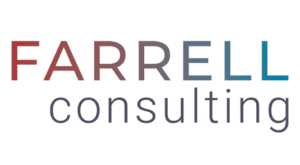Resistance to Change – Leading Differently: Six Types of Resources Employees Need
Note: this is a five-part series. Read Part 1 | Part 2 | Part 3| Part 4
By Patrick Farrell and Katherine Sanders
INTRODUCTION
People need a sense of autonomy and agency in order to be healthy. We expect our actions to help shape our experiences. When we start to feel helpless, or that what we do doesn’t change our lived experience, we become depressed and anxious.
When leaders are dealing with change, there can be a tendency to try to limit uncertainties and control outcomes in order to feel “safer.” As human and understandable as that approach is, it is misplaced. Approaching change by trying to establish certainty about outcomes isn’t effective for two reasons: first, because it is not possible. We can’t know what’s next. Secondly, trying to control outcomes decreases our organization’s change capacity.
HOW LEADERS CAN LEAD DIFFERENTLY
Most change incorporates external factors that come to us, and some internal factors we may control. We don’t get to determine what comes to us. We only determine how we respond to what comes, and through that process of responding, we start to affect how easy it will be to respond to whatever happens next. So the question becomes, “How can we be prepared to adapt and be flexible so that we can address issues that come to us?”
To make this work leaders need to lead differently. Leadership moves away from trying to control outcomes and instead focuses on the preparation of people to be able to engage effectively when the next situation arises.
This is why a Healthy Foundation is a critical first step. The process of building this healthy foundation will show us what our people are most concerned about. Responding to their concerns in a transparent and timely manner builds trust and mutual respect. In turn, leadership’s transparency helps people understand the constraints (e.g., budgets, market, challenges) the organization is working with.
With this healthy foundation, we can lead differently. We can charge local groups to resolve issues as they arise, before they lead to resistance to change.
SIX TYPES OF RESOURCES
-
- Relevant Information – understanding how their work process and products impact the rest of the system
- Collaboration Skills – common understandings and skill development in collaborating within their group and between units
- Regular Time Reserved for Resolving Local Issues – time to address local issues needs to be built into the regular work schedule
- Assigned Budget for Local Improvements – budget authority (within a specified range) needs to be given for groups to make local improvements. This might include access to internal or external expertise (e.g., project planning, assessment, quality, safety, human resources, etc.).
- Decision-Making Authority – groups need to be able to implement changes and assess them for effectiveness without asking permission
- Sustainable, Creative Connections Across Units – groups need to have a way to share innovations across the organization and learn from each other.
When we lead differently, empowering local groups to address issues as they arise, the leader’s job changes from trying to control outcomes to focusing on preparing people to meet whatever challenges arise in the near term and further out on the horizon. Local autonomies can address everyday challenges as they arise, reducing people’s frustrations and increasing their capacity to engage in large-scale change initiatives.
FOR MORE INFORMATION
Sanders Consulting and Farrell Consulting help teams implement humane and practical change initiatives.








